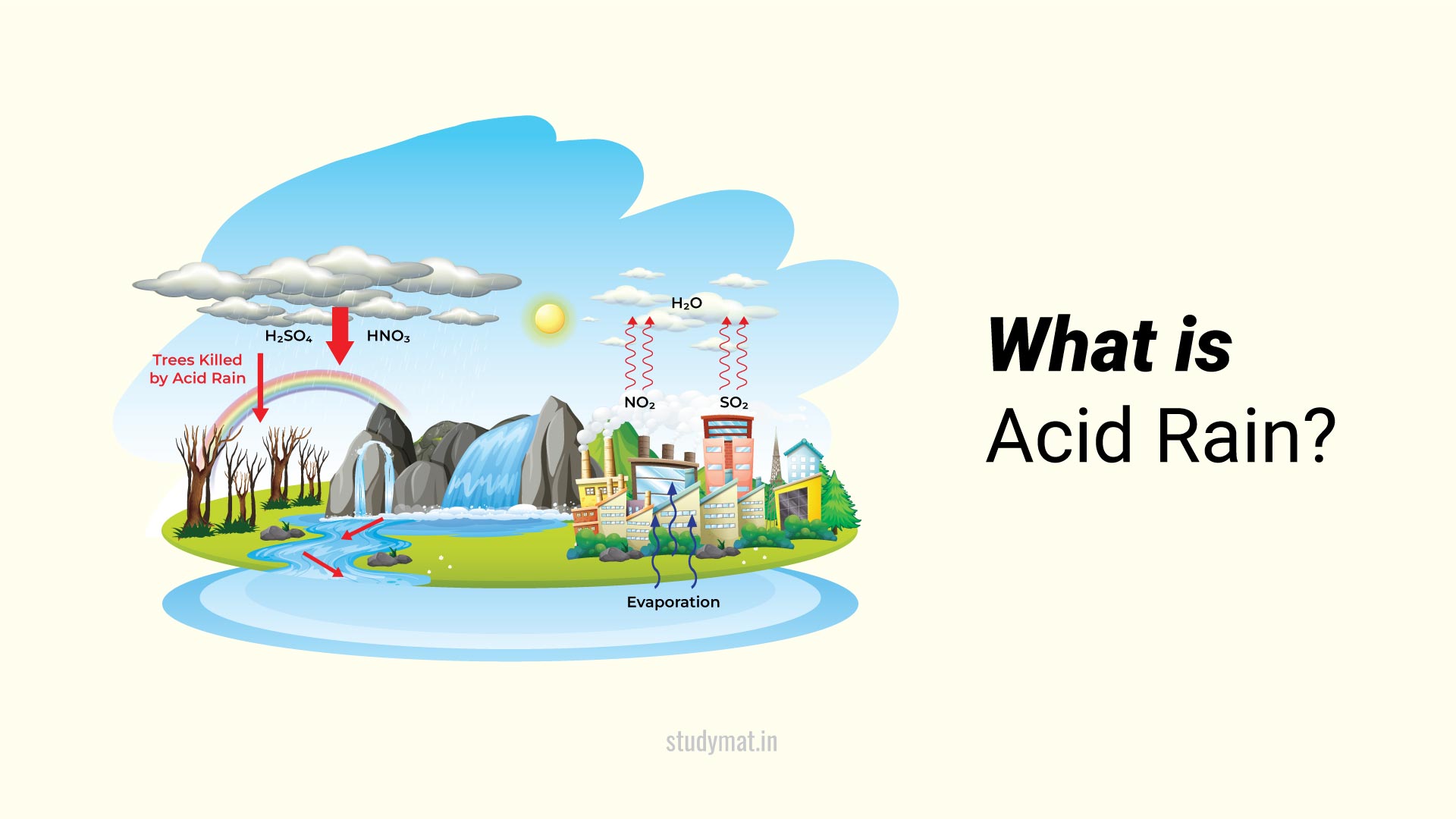In this article, we will discuss Acid Rain is considered one of the major global issues. Explain Acid Rain and Its Effects.
What is Acid Rain?
To understand Acid Rain, let’s start with what acids are. Acids are substances that release hydrogen ions (H+) when mixed with water. Some acids are strong, like hydrochloric acid (HCl), while others are weak, like acetic acid (CH3COOH) found in vinegar.
The strength of an acid is measured by its pH value, which ranges from 0 to 14. If something is acidic, its pH is less than 7. Water(distilled) has a pH of 7.0. Even in the unpolluted environment, rain is slightly acidic with a pH of about 5.7. This happens because carbon dioxide in the air mixes with rainwater to make carbonic acid.
CO2 + H2O → H2CO3
Read Also:
Explain the Relevance of Wetland with Respect to Nature Reserves at the Global Level.
Explain the Objectives of the Environment Protection Act of 1986 and Its Role in Environmental Conservation.
How does the Environment Influence Human Health? Explain it in detail with suitable examples.
Explain the Problems associated with Improper Waste Disposal and its Impact on Humans.
Any form of precipitation like rain, snow, or fog is called acid deposition if it has a pH less than 5.7. Acid deposition can be wet, like acidic rain snow or even fog. On the other hand, dry deposition is like acidic particles and gases sticking to surfaces. These deposits stay on the surfaces of buildings, vegetation, water bodies etc. and get washed by the rain to the ground. These acids harm plants, soil, and aquatic life.
The wet deposition of acid rain or snow contains nitric acid and sulfuric acid. These are formed when oxides of nitrogen and sulfur mix with water.
Read Also:
Explain the Different Parameters that can assess Water Quality as a Consumption.
Central Pollution Control Board (CPCB).
When we burn fossil fuels like coal or oil, they release sulfur dioxide (SO2), and sulphur trioxide (SO3). Similarly, when any organic matter with high nitrogen content is burnt, it produces oxides of nitrogen (NOx), nitric oxide (NO) and nitrogen dioxide (NO2). These gases can come from forest fires, electric power plants, or motor vehicles. They react with water in the air to form sulfuric acid (H2SO4) and nitric acid (HNO3), which are strong acids.

These acid-causing gases can travel long distances in the air, even crossing borders between countries. That’s why acid rain is seen as a global problem.
FAQ:
- What is acid rain explain the effects of acid rain?
- Explain acid rain causes and effects.
Follow us:
If you like this article, you can Follow us on Facebook.
Also, you can Join our Official Facebook Group for QnA Sessions and Discussions with the worldwide IGNOU community.



